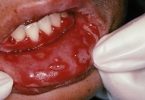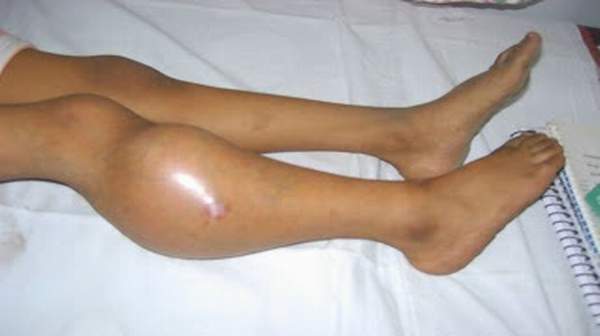What's in this article?
What It’s Like To Have Dyslexia
Dyslexia is a language-based learning disability. Dyslexia refers to a cluster of symptoms, which result in people having difficulties with specific language skills, particularly reading. Students with dyslexia usually experience difficulties with other language skills such as spelling, writing, and pronouncing words.
Dyslexia affects individuals throughout their lives; however, its impact can change at different stages in a person’s life. It is referred to as a learning disability because dyslexia can make it very difficult for a student to succeed academically in the typical instructional environment, and in its more severe forms, will qualify a student for special education, special accommodations, or extra support services.
How To Identify Dyslexia?
Trained professionals can identify dyslexia using a formal evaluation. This looks at a person’s ability to understand and use spoken and written language. It looks at areas of strength and weakness in the skills that are needed for reading. It also takes into account many other factors. These include family history, intellect, educational background, and social environment.
What Causes Dyslexia?
The exact cause of dyslexia is unknown, but it’s seen more commonly in families.
Six genes have been identified that may be responsible for the condition, four of which affect the way the brain is formed during early life. Specialist brain scans (functional magnetic resonance imaging (MRI) scans) also show there is reduced function of one area towards the back of the brain, called the occipito-temporal cortex.
Symptoms of Dyslexia
Dyslexia symptoms can be difficult to recognize before your child enters school, but some early clues may indicate a problem. Once your child reaches school age, your child’s teacher may be the first to notice a problem. The condition often becomes apparent as a child starts learning to read.
Before school
Signs and symptoms that a young child may be at risk of dyslexia include:
- Late talking
- Learning new words slowly
- Difficulty learning nursery rhymes
- Difficulty playing rhyming games
School age
Once your child is in school, dyslexia signs and symptoms may become more apparent, including:
- Reading well below the expected level for your child’s age
- Problems processing and understanding what he or she hears
- Difficulty comprehending rapid instructions
- Problems remembering the sequence of things
- Difficulty seeing (and occasionally hearing) similarities and differences in letters and words
- Inability to sound out the pronunciation of an unfamiliar word
- Difficulty spelling
- Trouble learning a foreign language
Teens and adults
Dyslexia symptoms in teens and adults are similar to those in children. Though early intervention is beneficial for dyslexia treatment, it’s never too late to seek help. Some common dyslexia symptoms in teens and adults include:
- Difficulty reading, including reading aloud
- Trouble understanding jokes or expressions that have a meaning not easily understood from the specific words (idioms), such as “piece of cake” meaning “easy”
- Difficulty with time management
- Difficulty summarizing a story
- Trouble learning a foreign language
- Difficulty memorizing
- Difficulty doing math problems
How Is Dyslexia Treated?
It helps to identify dyslexia as early in life as possible. Adults with unidentified dyslexia often work in jobs below their intellectual capacity. But with help from a tutor, teacher, or other trained professional, almost all people with dyslexia can become good readers and writers. Use the following strategies to help to make progress with dyslexia.
- Expose your child to early oral reading, writing, drawing, and practice to encourage development of print knowledge, basic letter formation, recognition skills and linguistic awareness (the relationship between sound and meaning).
- Have your child practice reading different kinds of texts. This includes books, magazines, ads and comics.
- Include multi-sensory, structured language instruction. Practice using sight, sound and touch when introducing new ideas.
- Seek modifications in the classroom. This might include extra time to complete assignments, help with note taking, oral testing and other means of assessment.
- Use books on tape and assistive technology. Examples are screen readers and voice recognition computer software.
- Get help with the emotional issues that arise from struggling to overcome academic difficulties.
Reading and writing are key skills for daily living. However, it is important to also emphasize other aspects of learning and expression. Like all people, those with dyslexia enjoy activities that tap into their strengths and interests. For example, people with dyslexia may be attracted to fields that do not emphasize language skills. Examples are design, art, architecture, engineering and surgery.
Complications
Dyslexia can lead to a number of problems, including:
- Trouble learning. Because reading is a skill basic to most other school subjects, a child with dyslexia is at a disadvantage in most classes and may have trouble keeping up with peers.
- Social problems. Left untreated, dyslexia may lead to low self-esteem, behavior problems, anxiety, aggression, and withdrawal from friends, parents and teachers.
- Problems as adults. The inability to read and comprehend can prevent a child from reaching his or her potential as the child grows up. This can have long-term educational, social and economic consequences.
Children who have dyslexia are at increased risk of having attention-deficit/hyperactivity disorder (ADHD), and vice versa. ADHD can cause difficulty sustaining attention as well as hyperactivity and impulsive behavior, which can make dyslexia harder to treat.
Why is Dyslexia A Gift?
Dyslexic people are highly creative, intuitive, and excel at three-dimensional problem solving and hands-on learning. Our visual and holistic learning style means that we learn best through the creative process, with methods that focus on mastery of the meanings of words and symbols.
The true gift of dyslexia is the gift of mastery. When we use learning methods that fit our thinking style, we can excel in academics and read and write efficiently.





